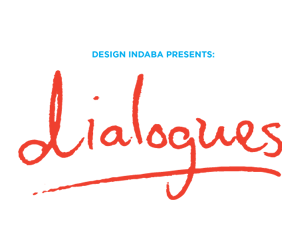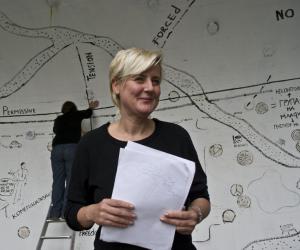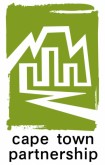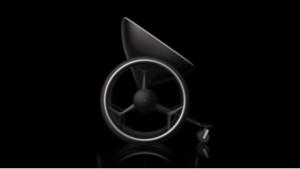Part of the Project
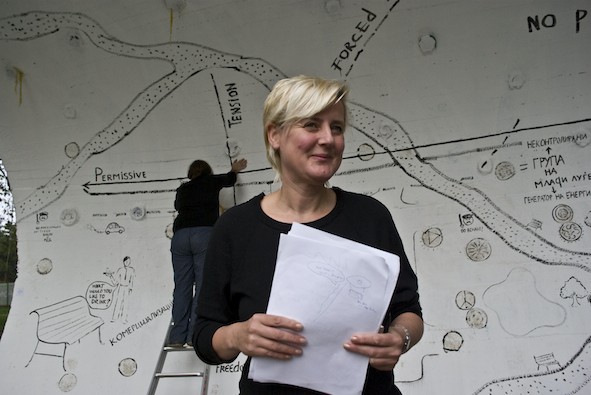
These provocations include talking to trees, arranging fashion marches and baking bread, but all are aimed at setting up opportunities for new encounters and dialogue – in a way that is finely tuned to the subtlety of needs, desires and ambitions of a local people and place. Jeanne presented some of her work at Design Indaba 2013. Here she shares more of her thoughts on public engagement, gentrification and the value of co-production:
A lot of your work spans a long period of engagement, often five, six years. What is the value of time in your design process?
Jeanne: I think spending time is a very important design element – to learn about the situation; to learn about the questions. Sometimes you have to hear things ten times just to understand the nuances of the way things are articulated. Quite often, when you enter a community for the first time or do work within a community, the first people you meet are already organised in one way or another. So they are often outspoken and they have a certain way to speak about the situation that is either angry or optimistic, depending whose side they are on. Spending time gives you the opportunity to hear more people’s opinion and different nuances of the same thing.
For example in Anfield, Liverpool, [where a housing renewal scheme meant people’s homes where bought up by the state for redevelopment that never took place] people repeatedly said: “We don’t like what is happening in our area. We don’t like these boarded-up houses. We are angry with the council.” But it was not until someone said that they were “sick of the waiting” that we really came to the crux of the matter. And what we’re talking about here is two things: waiting as an activity and not feeling well about it. In an area where you want to encourage living well, it is interesting to start working with this idea: to stop the waiting and to start making. This might seem like a very simple idea, but it is about the way it is formulated. We could have said: “Ok, you don’t like the boarded-up houses, let’s open up the houses again,” but actually I don’t think that would have created the same process in order to stop the waiting.
By creating something collectively, by doing and making, whether it is a building or a loaf of bread, once you start producing again, it moves people from waiting into action. For me it is a very important condition for all my projects: to co-produce change, to co-produce an environment. And for that you need to work together and learn together and you basically just need to spend time. In practical terms that doesn’t mean I necessarily stay around all the time. Sometimes it is good to go back and forth. Often I spend a chunk of time, three to four months at a time, working on a specific project.
You work in communities across the globe. How do you overcome being an outsider?
I don’t believe in the local as a fixed unity. Locality is a mix of what I call local experts. A local expert can be someone who lives there but it can also be someone who works there. For example in the Afrikanerwijk, Rotterdam, the market stallholders, who are only there on market days, are very important for what happens in the area. They come from all over the Netherlands and even outside the Netherlands but they have an expertise because they know what it means to be at that market. This is an important dynamic. Sometimes certain localities have certain emergent issues that need experts to come from outside because they don’t have that specific expertise on location.
What are the ingredients for successful participation?
I think there is no recipe for it. That is the thing. Too often we want to try to package participation into recipes, strategies or deliverables so that we can easily tick the boxes at the end of the day. In my work I set up a situation where we can start producing again. You have to set up camp; set up shop; set up your studio there. Start working on site with people in the conditions that are there.
I think it is vital that all projects should be site-specific, context-specific, people-specific. There is no recipe for that because every situation is really different. Although there are some global trends and the pressure of capitalism drives the need for renewal everywhere, every situation is so specific: of course you have to work with the people who are there. I don’t think you should enter into a process completely blind: I do my research very well, but you have to go in there with the ability and the desire to learn about the situation and not with a preconceived plan or criteria or ideas. You can’t arrive with something and say: “Oh, I already drew something that you might like… ”
If capitalism has made us passive consumers, then how can we become active producers? How do you overcome passivity and bring people to action?
You keep poking them. Sometimes this is the hardest thing for people to do; to step over that boundary, to leave that passive consumerism behind and really start taking part. It is hard because becoming an active participant in producing an environment means taking risks. If you take risks, you make mistakes. People might not like what you produce, so you are continuously confronted with “the other” and confrontation is not something that makes us comfortable. But it is something we need in order to have a relationship with anyone or anything.
We need to confront and negotiate the difference; the different perception of what self and identity is or what we are together or can be together. The future you imagine and my vision might look completely different, yet here we are sitting together on this couch and we have to figure it out.
What is the value of making or producing?
To make is very important. Almost in a Marxist way we need to reclaim the right and means of production. I think at this moment in time we need to claim the right to produce culture; to produce cultural relationships and the cultural sphere. We need to reclaim this right from advertising, mass media and consumerism. I am an old-fashioned believer in the idea that we have to make things ourselves in order to get a grip on reality.
So how do you feed the ideas that develop through the process back into formal structures?
You have to work together with formal structures. I don’t really believe in outsiders; us and them; we’re all in the mix together and that is important. Quite often I have good alliances with people in office but sometimes there is a particular need to not make an alliance with some local council or authority figure because their politics or their ways in dealing with the community are questionable.
Now you can never do that when things become really broken because, even if you are not in alliance, you have to stay in conversation; there has to be dialogue. I often use civil disobedience in my work and it is demonstrative of how things can be different. It is not necessarily trying to go against a law or regulation but just opening up the space to show alternatives, what can be possible. For example with the Afrikanerwijk project [where Jeanne systematically questioned and subverted regulations that governed the market through a series of experiments] the best design or product that actually came out of the process was to influence new legislation on the market. Sometimes you have to work with policy makers or lawyers, urban designers and governments. You have to find ways to package everything that you found in the process so that it can be translated back to power.
You are not a big fan of the words “upgrade” or “urban renewal”. Why is that?
Because they’re quite often linked to the idea of what we call “progress” without having collectively defined what that will mean. Sometime progress is taking a step back; progress is not always a linear thing; progress is something that is an organic system of learning. Often renewal is used to push an agenda of clearance, with some groups no longer being able to take part in that society; an agenda of exclusion.
How do we circumvent the problematic issue of gentrification?
It is very hard to circumvent it because one way or another it will happen eventually. For instance in Anfield we are really far away from it. I don’t think you will be able to buy a latte [Jeanne’s anecdotal measure for gentrification] there anytime very soon. But that makes me think of Lynne, one of the community members in Anfield. She said: “We deserve better. We deserve more than what is given to us. We are not just deprived people; we just need something different. Who are you to tell me that I can’t have that latte?” What Lynne managed to capture was that she might want the area to be gentrified but if that latte means she can’t pay her rent anymore, then it is a problem. But it also doesn’t mean she doesn’t like the cappuccino. And that is maybe the other side of the story. We have to find a better way to create inclusive renewal, instead of just having one idea about what renewal is. We have to be sensitive. We have to actively listen and not smoke out all the people who participate in an area.
Have you ever had a project that you felt failed?
I think they all fail in some way or another. That is why I say they are all processes of continuous learning. Every time you learn from a situation and you try again. That doesn’t mean you don’t fail again, but you learn to make the mistakes more elegantly.
How do you know when the project is done?
There is always a moment when a community says “Thank you”. And “Thank you” is very different from “Thanks”. “Thank you” is a way of saying “I think we are capable of continuing on our own, or we raised enough of our own momentum, or trust in the fact that we can do it ourselves,” and that becomes a cue for me to leave. But then I have worked with communities that have phoned back a year later because there is another situation and I am also happy to go back.
Why do you do this work?
I am a believer in the fact that we are in a very turbulent time, in a very tense time and as a result it is very important that we figure out how we can live together. And for that you can wake me up every day. I am a believer in a better world.
- Watch a video of Jeanne’s presentation at the 2013 Design Indaba here.
Portrait of Jeanne van Heeswijk supplied.

